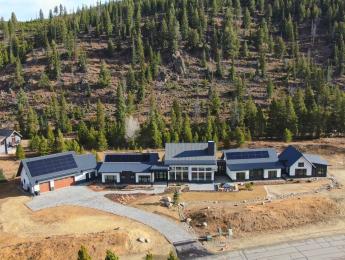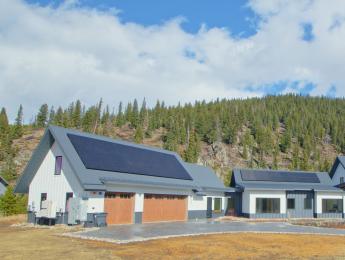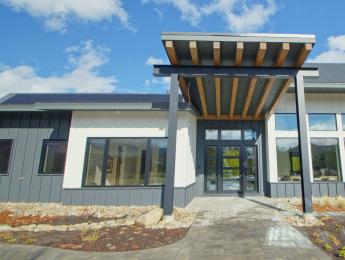Committing to a Carbon Free Home
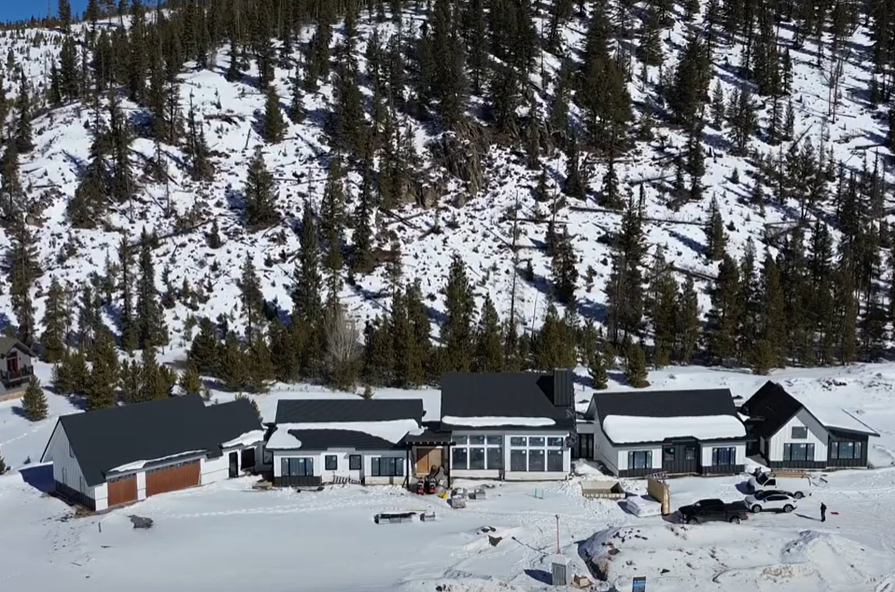
Striving for high standards in sustainable design is the primary objective for the Pro Builder Panorama Idea Home.
“Thrive is about building homes for the health of our customers, but they really can’t be healthy without thinking of the health of our planet,” says Gene Myers, Thrive’s founder and chief sustainability officer. “So, for us, the next step had to be carbon reduction.”
As the 6,600-square-foot custom sanctuary in Breckenridge, Colo. nears completion, it is clear that the house will not only meet but surpass expectations for carbon neutrality.
Getting There
One of the first objectives was to develop a strategy for calculating the home’s embodied carbon footprint. Embodied carbon is the sum of all carbon emissions associated with manufacturing each component of the home. With help from the University of Denver and MiTek, a final bill of materials will be developed and entered into One Click LCA, a carbon calculating platform that University of Denver has determined is best suited for homebuilding. One Click LCA takes into account the amount of embodied carbon in all the major building components and materials, from the foundation and wall studs to the kitchen appliances and floor finishes.
Working from the ground up, Thrive thoughtfully specified materials to reduce overall embodied carbon. An innovative fiberglass foundation supplanted traditional concrete, all insulation material was verified as carbon-neutral, and offsite fabrication of the home’s perimeter wall panels and roof trusses helped reduce material use and transportation penalties associated with fossil fuel use.
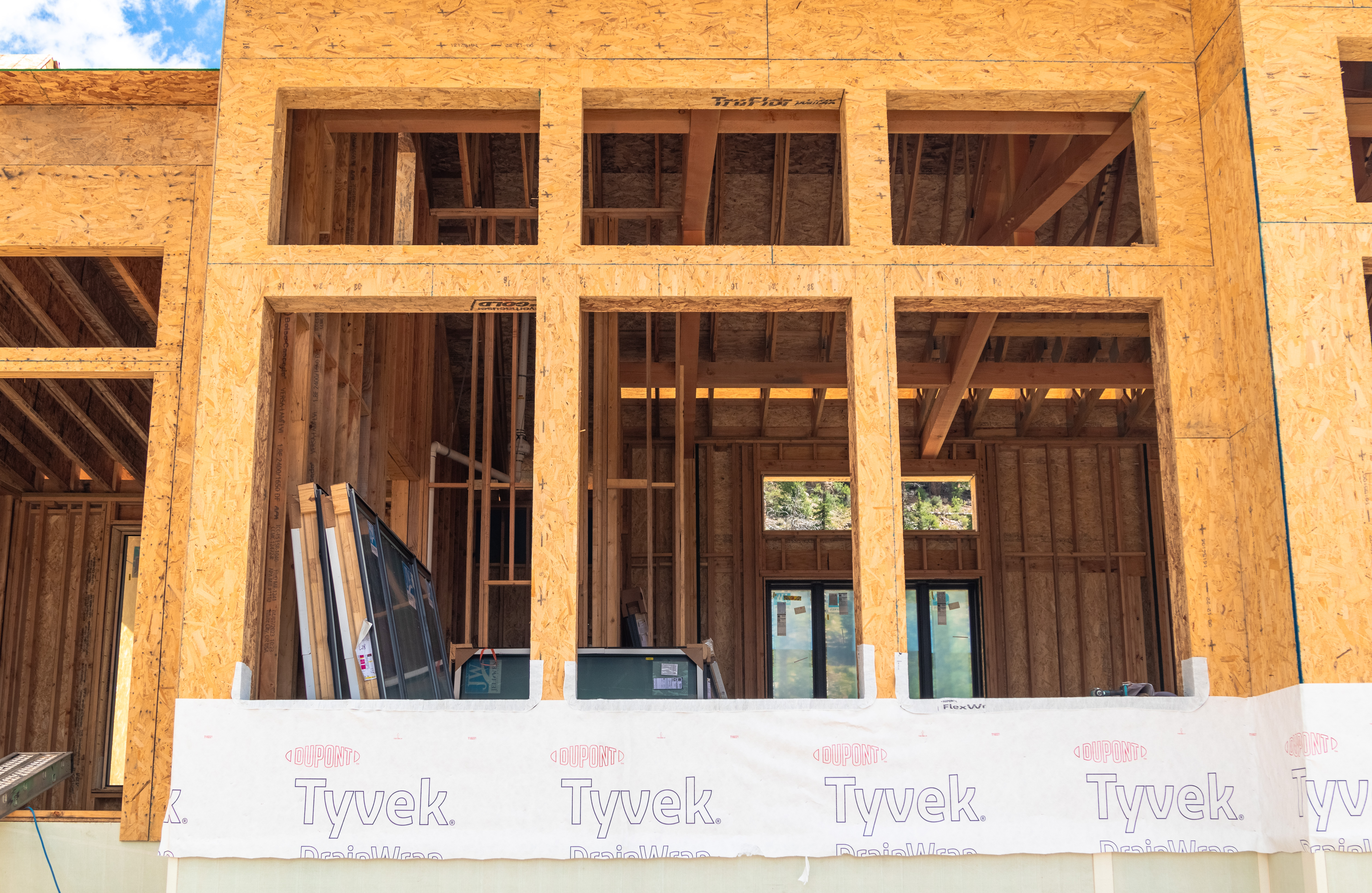
“We came up with a great partnership for prefabricated roof trusses, wall panels and floor cassettes with MiTek, who supplied its software program to our off-site component manufacturer,” says Myers. “That helps us calculate the carbon footprint of the system, and then drives the design and fabrication of the components at their plant to help us reach our goals.”
Reducing operational carbon of the Panorama Idea Home was the next step. Operational carbon is the carbon footprint of the energy consumed each year. As a net zero energy home, Panorama’s annual energy needs will be produced by its rooftop solar array. Being all electric means that no fossil fuels will be used to augment that solar power. Thus, all energy used to operate Panorama House is renewable, free from any carbon footprint.
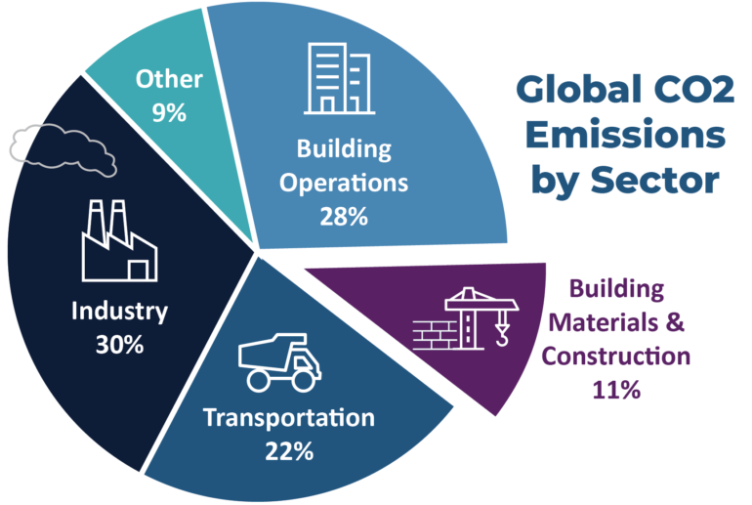
To achieve carbon neutral status, the house is designed to be all-electric with onsite renewable power generation. Four air-source heat pumps by Mitsubishi for space conditioning combined with a rooftop solar array and battery power storage help ensure the home is certified Zero Energy Ready Home by the U.S. Department of Energy.
Achieving a Balance
Once the calculations are complete, the final task for Thrive will be to find a way to offset what remains of Panorama’s overall carbon footprint.
After conducting independent research on various options, Thrive selected CNaught to provide the carbon offsets using a flat price-per-ton purchase option of carbon credits as well as transparency on where and how the offsets would be utilized.
“My hunch is that there is a lot of greenwashing going on with carbon offsets,” says Myers, “so we have to look at something that is a legitimate and verified offset that can’t be sold several times,” thus eroding its value and legitimacy.
The Business Case for Carbon Neutrality
For Thrive, achieving carbon neutrality in their homes and product specifications may start as an environmental goal, but there is a healthy business motivation, as well.
“I’d rather just get out in front of the codes and regulations and figure out the right way to do it before we’re required to do it,” says Myers. “And maybe inform that process.”
To help provide transparency of its intentions, actions, and commitment to its home buyers, Thrive commissioned an environmental, social, and corporate governance (ESG) report, a detailed, disclosure of data-driven summary that offers insight into the process.
According to Myers, achieving an all-electric zero-energy carbon neutral home results in only about a 5% premium for building costs over Thrive’s already energy efficient standards, but also creates new marketing opportunities that offset a client’s investment in a healthier home and a healthier planet.
“We are updating our marketing messages from model homes to our branding to help communicate what we are trying to do for carbon reduction,” Myers says. “It’s a really unique value proposition.”
With sustainable goals firmly in place, the Panorama Idea Home is posed to create a space that is comfortable and healthy for both its occupants and the planet.
Resources and links:
One Click LCA: https://www.oneclicklca.com/
MiTek Software: https://www.mitek-us.com/software/
DOE Zero Energy Ready Home Program: https://www.energy.gov/eere/buildings/zero-energy-ready-home-program
